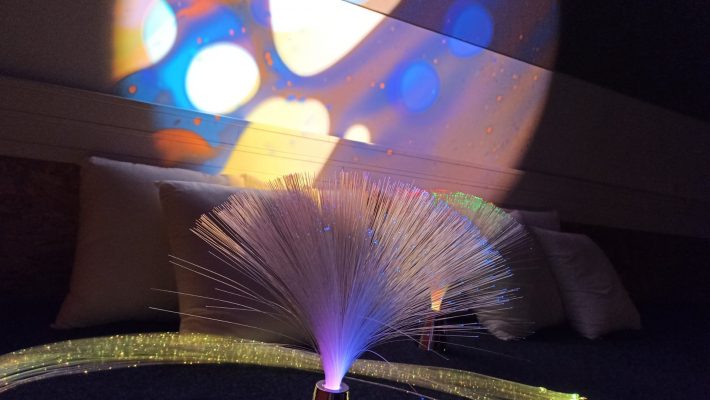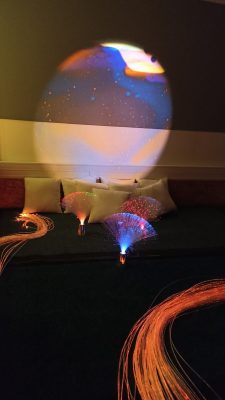We spoke with Dr. Sandra Silva, a graduate in School Psychology and specialized in Special Education, namely in Specific Learning Difficulties. Trained in Practical Snoezelen Intervention Methodologies in the areas of Special Educational Needs and Dementia and professionally certified in Forbrain Stimulation Techniques, Dr. Sandra is currently responsible for the development and multisensory intervention of the Snoezelen room of a school in the district of Porto.

The Snoezelen room at the school group where she works was created as part of the local City Council’s Youth Participatory Budget. The winning proposal came from two students and allowed the room to be built at the school’s headquarters. All students in the municipality with special health needs can benefit from the support provided in this space, including Autism, Down Syndrome; Asperger’s; Cognitive Delay; Attention Deficit Hyperactivity Disorder; Language Impairment; anxiety and depression, among others.
The Snoezelen intervention focuses on stimulating the seven sensory areas (auditory; olfactory; tactile, gustatory, vestibular and proprioceptive), but also on the child's relaxation and well-being.
Multisensory Intervention

The referral of children in need of Snoezelen therapy is made by the teachers who work with them on a daily basis.
The type of intervention depends on completing a referral form, where the areas to be developed and/or stimulated are marked. Above all, the most important thing is to combine the areas to be worked on with their favorite instruments. This way, the child will feel confident and comfortable in this space. It is the child who helps to define the best path to follow.

Dr. Sandra said that, in the first four sessions, the child is given freedom to explore the room. From this point on, it is possible to identify each child's preferred materials. In this sense, the exercises are prepared, adapted and guided according to the areas that each child needs to stimulate. Then, a sensory diet is prepared, which is often adapted to the child's needs.
Sometimes the child may show some resistance to entering the room, as they will find it a dark and unfamiliar space. In this situation, you should not take a directive approach, but rather give the child some time to adapt. An erratic approach can become aggressive and devastating for the child.
Multisensory Resources and Experiences

In this room, children can find a variety of materials that allow them to develop unique, complete and meaningful multisensory experiences. Here are some examples:


Dr. Sandra told us that working in this space has been very enriching and challenging, as each child has very unique characteristics, which requires constant adaptation of the intervention.
He also emphasized that the equipment in the room is the basis of all the work, but it is necessary to create new instruments adapted to the particularity and uniqueness of each child and this is the great challenge of this work.
He mentioned that sometimes it is difficult to attract the child's attention to a certain activity and that sometimes it is not always possible to carry out a planned activity, given the child's mood.
Benefits of practicing Snoezelen

Dr. Sandra stated that multisensory intervention allows the development of cognitive, communicative, behavioral, socio-emotional, motor and educational skills. She also highlighted that the intervention allows the reduction of maladaptive, aggressive and stereotypical behaviors; the reduction of anxiety and stress; the increase of attention/concentration; the increase of self-esteem and self-control, motivation and autonomy and the relief of pain. In this space, the child also learns to acquire rules, habits and routines and to understand limits.

Dr. Sandra told us that at the end of each session, the children feel calmer and more relaxed. Many even like to show their parents what they have been doing and some of the children are reluctant to leave the room because they feel safe and well.

According to Dr. Sandra, the collaboration with the family has been very positive and has been fundamental to the success of the intervention.

